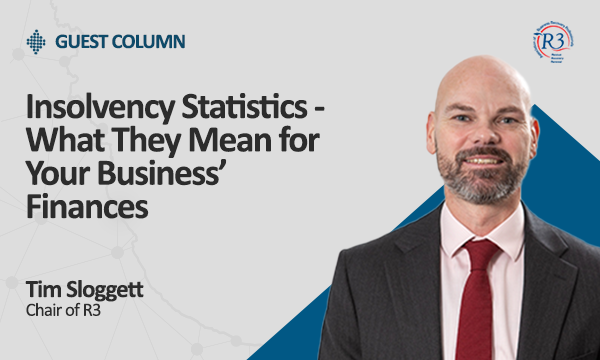More About Insolvency Practitioner
More About Insolvency Practitioner
Blog Article
Excitement About Insolvency Practitioner
Table of ContentsThe Of Insolvency PractitionerThe 10-Minute Rule for Insolvency PractitionerSome Ideas on Insolvency Practitioner You Need To KnowThe 8-Minute Rule for Insolvency PractitionerInsolvency Practitioner Can Be Fun For EveryoneInsolvency Practitioner - The FactsAll about Insolvency Practitioner
Bankruptcy is when liabilities are more than the worth of the firm, or when a borrower can not pay the debts they owe. A company can end up being financially troubled due to a number of circumstances that bring about inadequate capital. When confronted with bankruptcy, a company or individual can contact creditors directly and restructure debts to pay them off.Service owners might call lenders directly and restructure financial debts right into more convenient installments. Financial institutions are commonly open to this approach due to the fact that they want to be paid off and avoid losses, even if the repayment is on a postponed timetable.
Insolvency Practitioner for Beginners
The proprietor develops a proposal outlining exactly how the financial debt might be reorganized using expense reductions or other strategies for assistance. The proposition reveals creditors how business may create adequate capital for profitable operations while paying its debts. Normally, a forgiven financial debt might be taken into consideration revenue by the Internal Revenue Service (IRS).

The Of Insolvency Practitioner
The service may wind up paying big amounts of money in damages and be overcome procedures. When operations discontinue, so does the business's earnings. Lack of revenue causes accounts payable and financial institutions asking for cash owed to them. Some companies end up being insolvent because their products or services don't evolve to fit customers' altering needs.
Expenses go beyond revenues and costs stay unpaid. Sorts of insolvency consist of cash-flow insolvency and balance-sheet bankruptcy. Cash-flow insolvency happens when a business has the assets to cover their debts yet they are in the incorrect form, such as realty rather than liquid funds. Balance-sheet bankruptcy, on the other hand, shows a lack of properties in any type of form to cover financial debts.
The IRS states that a person is financially troubled when the total responsibilities exceed total possessions. A personal bankruptcy, on the other hand, is a real court order that depicts exactly how a bankrupt individual or company will settle their financial institutions, or how they will sell their possessions in order to make the repayments.
How Insolvency Practitioner can Save You Time, Stress, and Money.

Financial obligation combination is when you incorporate multiple financings into one new car loan, commonly to attain far better terms. Bankruptcy is not the very same as personal bankruptcy, although a business that has ended up being bankrupt might submit for insolvency. Bankruptcy is the state of not being able to pay your responsibilities while insolvency is a legal process to release your debts.
Comprehending the elements that can bring about bankruptcy, such as overspending, can help you prevent bankruptcy and this page its repercussions.
The 25-Second Trick For Insolvency Practitioner
It is well known that directors and policemans of firms (and supervisors of minimal liability firms) owe fiduciary responsibilities to their companies and their shareholders (or members). These fiduciary commitments are specified by state statutes and, though there are variations from state to state, they typically include an obligation of commitment and a responsibility of care.
The obligation of treatment requires directors and officers to exercise diligence, to make educated choices, and to act in excellent confidence so that their activities remain in the best interest of the company. Past the navigate to this site extent of this conversation, some states permit these duties to be limited either by so keeping go to my blog in mind in the organizational papers or conforming with various other needs.
Our Insolvency Practitioner PDFs
A lot of states specify insolvency in 2 methods( 1) when a business's liabilities come to be above the sum of its assets or (2) when the firm comes to be not able to pay its debts as they come to be dueand accept both definitions (Insolvency Practitioner). The shift in responsibilities occurs due to the fact that when a firm is financially troubled, there is no value in the business beyond that owed to the company's creditors to make sure that the equity owners no more have a financial stake in the business
Take care about giving shareholders favoritism at the expense of financial institutions (e.g., accrediting and moneying a returns or a stock redemption). Take care concerning favoritism between courses of investors. Clear up efforts to discover all the facts prior to taking a particular strategy; directors ought to really think that any type of decisions made are in the most effective rate of interests of the company in its totality (i.e., decisions will be assessed in knowledge in light of the impact of such actions on the corporation).
In any type of bankruptcy or bankruptcy proceeding, settlements made to particular creditors at the cost of various other lenders can be clawed back, especially if there is some link in between the company and the creditor. Consider suggesting at a yearly shareholder meeting (or any type of various other meeting of shareholders) a resolution attesting that all previous service choices and actions taken by the directors and policemans of the company were absorbed good belief after an exercise of affordable care.
Insolvency Practitioner - Truths
Totally divulge any kind of individual or organization connections with events beyond of purchases including the company to prevent the appearance of a dispute of rate of interest. In examining prospective fund increasing transactions or a sale of assets of the troubled firm, understand that these purchases might be inspected later in light of any kind of succeeding expansion of directors' fiduciary duties to consist of financial institutions.
Report this page